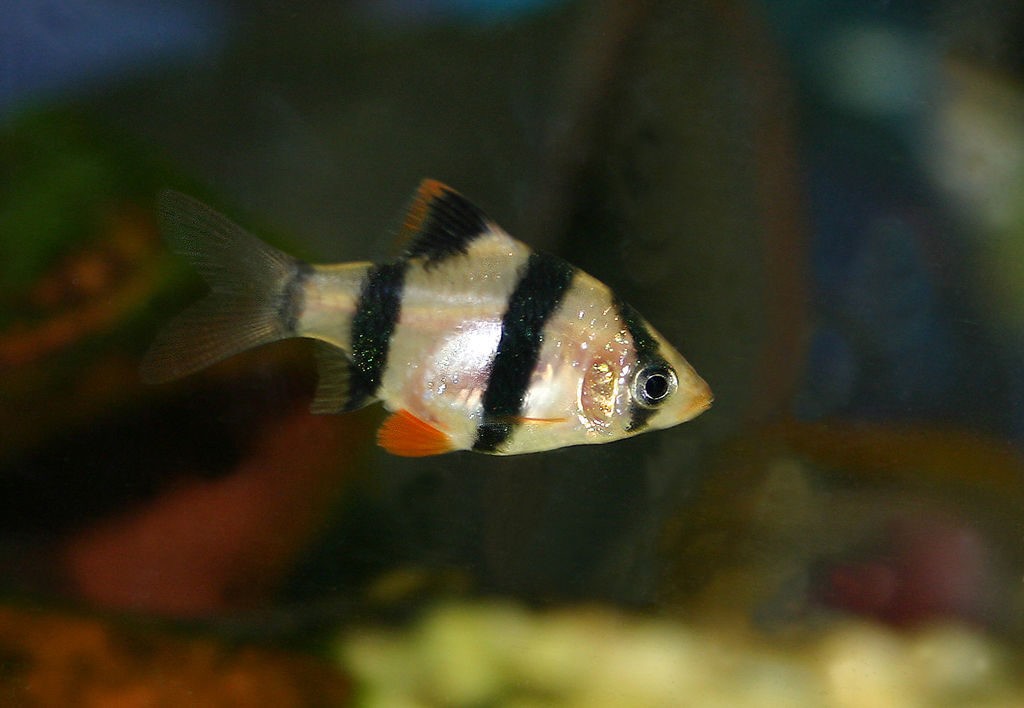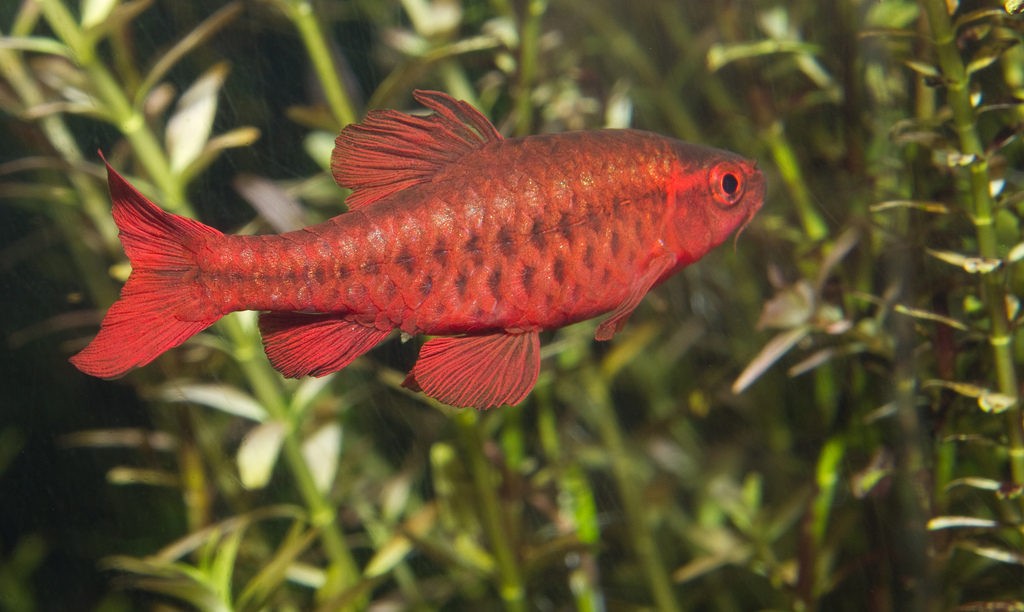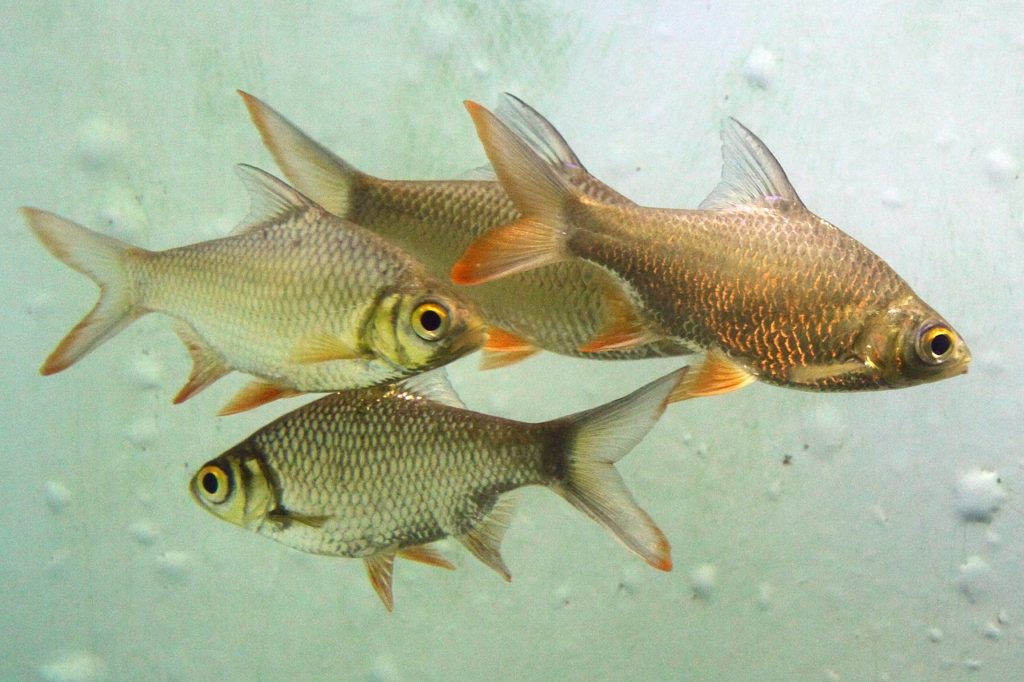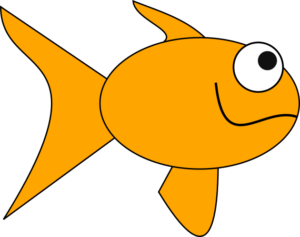Sharing is caring!
Barb fish are a wonderful way to add color to just about any tank. They are a schooling fish that vary in size, although most are a small and manageable size.
Depending on the species, Barbs are native to Asia as well as Africa. Their care level ranges between easy and moderate due to the extra care required in housing them.
Barb Fish Quick Facts
| Scientific Name: | Varies by Species |
| Diet: | Omnivorous |
| Salinity: | Freshwater |
| Tank Size: | 20 Gallon Minimum |
| pH: | 6 – 8 |
| Behavior: | Semi-Aggressive (with a few exceptions) |
| Max Size: | 3 Inches – (with a few exceptions) |
| Lifespan: | 5 Years |
| Temperature: | 74 to 80 ℉ |
| Origin: | Asia and Africa |
Barb Origins
Mostly found in South East Asia, some Barbs are native to western Africa. Typically Barbs enjoy their time in rivers or streams and are one of the few fish that actually have rows of teeth.
Barbs are comprised of over 2,000 different species that vary greatly in size and care requirements. I’ll try to cover the more common Barbs and their needs below.

Common Barb Species
A short list of the more commonly available Barbs and their specific features.
Cherry Barb
- Max 2 Inches
- Min 20 Gallon Tank
- Peaceful and Timid
Tiger Barb
- Max 3 Inches
- Min 30 Gallon Tank
- Semi-aggressive. Is known to be a nipper. Best kept in schools.
Tinfoil Barb
- Max 13 Inches
- Min 80 Gallon Tank
- Peaceful and Docile
Denison Barb
- Max 4 1/2 Inches
- Min 50 Gallon Tank
- Peaceful
Rosy Barb
- Max 6 Inches
- Min 40 Gallon Tank
- Semi-aggressive. Is known to be a nipper. Best kept in schools.
The Perfect Barb Tank Setup
- 20 Gallon minimum. Larger for larger Barb Species.
- Prefers a well planted tank with plenty places to hide.
- 74-80 ° F. Heat as necessary. Although warm, some species such as the Denison can be kept as cold as 60 ° F
- Peaceful in schools of 6 or more. Some species are more aggressive than others.
- Proper filtration is required.
- Gravel or sand substrate.
- A tight fitting lid. Some species are known to jump.

Barb Fish Diet
Barbs are omnivores therefore require a balanced diet of both meat and vegetable based meals. Be sure to choose a flake or pellet food made for Omnivores. Supplement meals with brine shrimp and blood worms as treats.
Feed your Barb two times a day no more than they can consume within 5 minutes or so. Any food that they don’t eat will sink to the bottom and both exaggerate the cleaning requirements but also increase the ammonia in the water. Water quality is especially important in smaller tanks or bowls.
Compatibility
Barbs can be peaceful if given the right environment. Some Barbs, such as the Cherry Barb, are naturally peaceful while others, such as Tiger Barbs must be treated differently.
Semi-aggressive Barbs should be kept in schools of at least 6. In larger schools Barbs tend to ignore other fish. In semi-aggressive tanks it’s best not to include slower or docile fish and long finned fish.
Sharing is caring!





